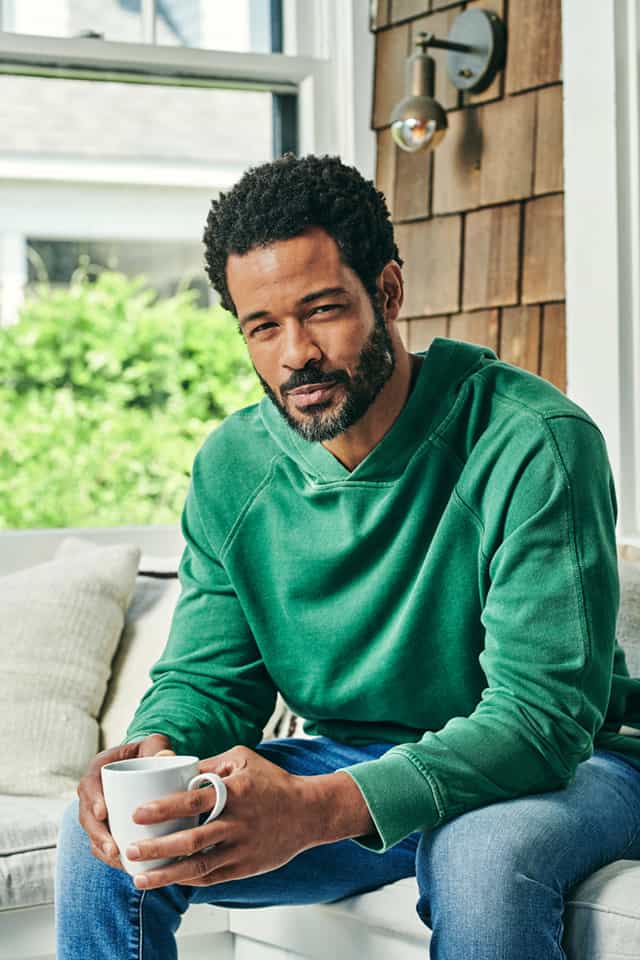FROM OUR NOVEMBER ISSUE: SUBSTANCE OR STORYTELLING?

Like most writers these days, I’ve taken to experimenting with ChatGPT to see if and how it can help me do my job. So far, I haven’t been terribly impressed (or threatened), but when I asked it to put together a “story” about sustainability and menswear retailers, it did come up with this little tale entitled “The Green Thread” (edited quite a bit for space).
There once was a menswear boutique named “EcoStyle.” Its founder, Samuel, was a visionary with a deep commitment to sustainability. Samuel had witnessed the detrimental effects of fast fashion, so he created a menswear brand that not only offered impeccable style but also championed sustainability. From the eco-friendly materials sourced for the clothing to the energy-efficient lighting that illuminated the store, Samuel spared no effort.
Word of the store spread, attracting customers who sought not only quality attire but also a meaningful shopping experience. Soon, the boutique became a hub for those who understood the importance of conscious consumption. Over time, EcoStyle’s success rippled through the industry. Other retailers took notice, realizing that sustainability was not just a passing trend, but an imperative for the future. They began to reevaluate their own practices, and, in time, a movement emerged. Stores around the world started incorporating sustainable practices into their businesses. Together, they formed an alliance committed to reducing the fashion industry’s environmental footprint.
The impact was profound. Landfills saw a decrease in textile waste, and manufacturers began to invest in renewable energy sources. As consumer awareness grew, so did demand for sustainable menswear, prompting even more retailers to join the cause. Sustainability became the new standard, and menswear retailers realized that it was not only the right thing to do for the planet, but also a smart business move. Sam’s store continued to flourish, serving as a beacon of inspiration for those who believed in the power of conscious fashion. And so, the green thread woven by Samuel and his fellow retailers continued to strengthen, leaving an indelible mark on the world of menswear and, ultimately, the planet itself.

If only it were true! But as a fan of doing what we can to save the planet, I hope that we’ll all engage in some truthful “green” storytelling.
Certainly, having a story to tell makes it easier to talk about product and get customers excited. Maybe it’s the fact that it’s Made in USA or Made in Italy. Maybe the company is 100 years old or has dressed presidents. And increasingly, the fact that a brand incorporates sustainable practices helps make the sale (as long as it doesn’t add too much to the cost of the goods!)
Of course, the term “sustainability” casts a rather wide net, with practices ranging from making sure the trucks that deliver products are electric to ensuring that factory employees are being treated well; from using fiber and fabric dyes that don’t pollute the water supply to being sure that the sheep are rocked to sleep at night. For now, we must approach the whole business with a skeptic’s eye until our friends on the manufacturing side get things sorted out with labeling, blockchain, artificial intelligence, and more.

Unfortunately, there’s also a lot of “greenwashing” out there: a study done this past year found that 60 percent of clothing brands’ claims are intended to convince consumers that these brands are more eco-friendly than they actually are. Fortunately, savvy men’s sportswear makers are on top of it. Notes Cecile Revah at Bugatchi, “Innovations continue to emerge in fabric and fiber technology, including aesthetics, performance, and functionality to create textiles that have a reduced environmental impact. The key is to stay attuned and informed. We’re already using sustainable materials in our shirting collections such as Ecovero fibers, organic cotton, hemp, and bamboo as well as a plant-based fill for our outerwear. Our new packaging is made from fully recycled materials.”
At Raffi, Kareen Shaya-Safier points out that “It’s important to incorporate sustainable practices on the production and manufacturing side, but to do it in a way that’s beneficial both for the company and for the customer.” She adds that—particularly in the merino wool market—suppliers from Biella, Italy have always practiced sustainability.
Other brands, like Fair Harbor, have gone to the trouble of establishing themselves as B Corporations, certified by a Pennsylvania-based not-for-profit that determines a company’s social and environmental performance. Luxury leader Loro Piana takes its commitment to the environment seriously, calling out its focus on clean water, solar energy, and cogeneration plants. And these days, it seems as if the entire denim industry is focused on cleaning up its manufacturing facilities and recycling products.
More good news: these companies and others are more than happy to tell their story and share information with you and your sales staff. (May we suggest hosting an in-store educational event with organic cocktails?)



Using organic textiles and more eco-friendly packaging materials great initiatives, but clothing brands and their supply chain partners should also consider partnering with bluesign technologies. We’ve been in the sustainability business for over 20 years, working to help reduce environmental impacts across the apparel supply chain.